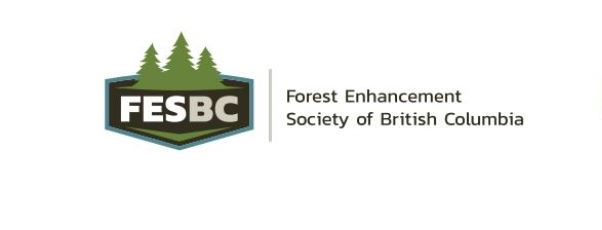
FESBC gets $25M boost to reduce BC wildfire risk, enhance forest health
June 17, 2022
By Government of BC

To reduce wildfires in higher-risk communities, the B.C. government is providing $25 million in new funding to the Forest Enhancement Society of BC (FESBC).
This investment will support community projects that reduce wildfire risk and enhance wildlife habitat, greenhouse gas (GHG) reduction, forest recreation and ecological resiliency. Applications for this funding will open on Monday, June 20, 2022.
“The FESBC is a proven partner in delivering projects on the ground that protect people from wildfire risks and reduce emissions from slash pile burning,” said Katrine Conroy, Minister of Forests. “Along with the historic investments in Budget 2022 to transform the BC Wildfire Service into a year-round service and double funding for proactive wildfire prevention, this new funding for FESBC will help build communities that are safer and more resilient to climate change.”
FESBC has supported 263 projects throughout B.C., and 43 of these projects have been in partnership with First Nations. These projects have reduced wildfire risk in 120 communities and have created about 2,200 full-time-equivalent jobs, among other outcomes.
“Our government is working together with First Nations and local communities to reduce the risk of wildfires so we’re better prepared for climate change,” said George Heyman, Minister of Environment and Climate Change Strategy. “This investment is an important part of our upcoming Climate Preparedness and Adaptation Strategy to support more resilient communities, reduce greenhouse gas emissions and provide job opportunities for people. By increasing actions, such as cultural and prescribed burning, we’re using powerful tools that can help reduce wildfire risk and improve ecosystem health.”
“We are proud that we have been able to work with partners to return our core territories to a healthy condition, and we are excited to see a return to cultural burning on the horizon. These lands have been our home since time immemorial, and it is important to us to see the land return to a healthy condition,” said Chief Willie Sellars of Williams Lake First Nation.
Since 2017, FESBC has funded the use of 4.8 million cubic metres of wood fibre that otherwise would have been burned in slash piles or abandoned. The combined GHG benefits of FESBC fibre use, tree planting and fertilization projects is 5.3 million tonnes of CO2 equivalent sequestered or avoided, which has the same GHG benefit as taking 1.1 million cars off the road for a year.
According to Philippe Theriault, general manager, Tsi Del Del Enterprises, “Since the beginning of the haul differential program, we delivered over 450,000 cubic metres of pulpwood and biomass that would have been burned before. No question, the help from FESBC has drastically reduced the waste in the bush and is keeping over 80 of us directly employed through very tough times. Great work, FESBC team!”
“Many Indigenous communities, municipalities, regional districts, woodlots and community forests have taken action in the last few years to protect their communities from wildfire,” said Steve Kozuki, executive director, FESBC. “They reduced the risk of extreme wildfire near buildings, communications infrastructure, water supply, power, safe place, and emergency escape routes. This funding will enable more communities to do this important work.”
As part of the CleanBC Roadmap to 2030, the province will work toward near elimination of slash-pile burning by 2030 and will increasingly divert materials away from slash piles and into bioproduct development. This will reduce air pollution and GHG emissions, while creating new economic opportunities.
The $25 million provided to FESBC is a component of $359 million announced in Budget 2022 to protect British Columbians from wildfires, including $145 million to strengthen the BC Wildfire Service and Emergency Management BC. This is the largest investment in the history of the wildfire service and is helping to transform the BC Wildfire Service into a year-round service, shifting from its reactive mode to a more proactive approach. This will enable the BC Wildfire Service to focus on all four pillars of wildfire management: prevention and mitigation; preparedness; response; and recovery.
“The FESBC funding allows us to maximize our ability to deliver a byproduct typically left on site, increase the overall recovery of fibre, and create long-term carbon benefits by harnessing new values from traditional logging sites outside the saw-log fibre supply. A $10 investment generates another $12 of private money, and $1 million results in about $10 million in private investment dollars. This gives us a good segue to break into the local biomass and pulp industry,” said Percy Guichon, director, Central Chilcotin Rehabilitation Ltd.
Learn More: Forest Enhancement Society of BC: www.fesbc.ca/
Print this page